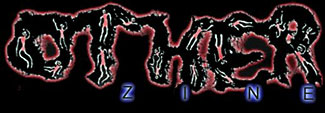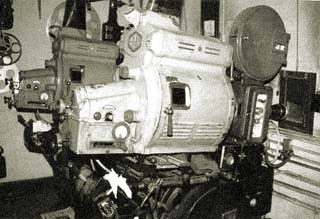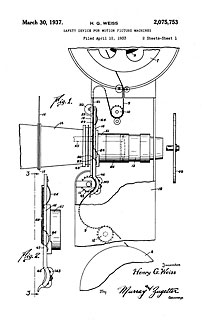
A Reel of Fire
23 September 2004
 It happened at the Green Parrot Theater in Seattle in the late 1930's. The Parrot, or Dirty Bird, to its later low-life customers, lasted until 1979. At the end it was a bottom-of-the-gutter porno theater on First Avenue. Sadly, it was destroyed by an arson fire. Although it had descended from its lofty beginning during the silent film era to cinema degradation it was part of the protected Pike Street Market historic area and could not be torn down. It took a "fire of suspicious origins" to make it give way to what many call progress. Or maybe it was the hand of fate. Fate that had not been cheated, but merely delayed, when it escaped a firey end forty years before.
It happened at the Green Parrot Theater in Seattle in the late 1930's. The Parrot, or Dirty Bird, to its later low-life customers, lasted until 1979. At the end it was a bottom-of-the-gutter porno theater on First Avenue. Sadly, it was destroyed by an arson fire. Although it had descended from its lofty beginning during the silent film era to cinema degradation it was part of the protected Pike Street Market historic area and could not be torn down. It took a "fire of suspicious origins" to make it give way to what many call progress. Or maybe it was the hand of fate. Fate that had not been cheated, but merely delayed, when it escaped a firey end forty years before.
It had been built in the early twenties as a legitimate movie theater. It was built in the glory days of the silent film. It was before selling popcorn and Coca-Cola became an integral part of the show. Not needing a snack bar, it had only a small lobby. It had a long, narrow auditorium that seated five hundred. There was a small balcony. The square marquee jutted out over the sidewalk. Originally hundreds of incandescent lights adorned it. Later they were replaced by neon. The incandescents only remained as a frame around the edges, controlled by an ancient mechanical chaser circuit device. By the mid 1950s, as the skid road neighborhood grew rougher; it became a sub-run, or sub sub-run house. In the sixties you could see a western triple feature for 35 cents. In the seventies you could see hard-core sex for five dollars. By then much of the neon was broken. There was a Coke machine in the lobby. The incandescents on the marquee still happily chased each other. The patrons inside chased each other in the dark.
On the night of the fire it was still a respectable downtown theater. Just down the street was the beautiful Liberty Theater. Within a short walk were other grand movie palaces. It was the era of reel to reel projection. It was before multi-plexes and automation. A union operator manned the projection booth at all times. Every twenty minutes he would make a seamless reel change without the rapt audience being any the wiser. He would start the show by dimming the house lights, opening the main curtain and projecting the first image, usually a Hollywood studio logo, on the scrim curtain. As the logo faded to black he would open the scrim, bring down the colored foot lights, and the credits would appear on the naked screen. The film stock swiftly running through the projector was called Nitrate. It was aesthetically the best film stock ever created. It was discontinued in the 1950's. It possessed a black that defined black and white. A black that was black. A black that few filmgoers have ever seen. A black that does not exist in modern film stock. Unfortunately, it could also burst into flame.
In accordance with strict fire codes all projection booths were lined with fire proof metal. Metal walls, ceiling and door. Over the port windows, through which the projection beam passed, were suspended metal shutters. They ran on tracks, much like a guillotine blade, poised to fall at the first sign of flame. Slim chains restrained them. The chains ran through pulleys, over the projectors, and were linked to the projection booth door. Directly above the projector the chain was joined by a heat fuse link. This link would melt at 180 degrees Fahrenheit. If the film caught fire, the heat fuse would melt, all of the port window shutters would slam down, and the booth door would slam shut. This would contain the fire to the booth, protecting the theater's patrons and the theater owner's investment. The projectionist was on his own.
All projection booths contained a carbon tetrachloride type fire extinguisher which produced phosgene gas in the presence of flame. Phosgene gas is poisonous. It was used in trench warfare during World War I. By both German and Allied armies. Phosgene often had a delayed effect; apparently healthy soldiers were taken down with phosgene gas poisoning up to 48 hours after inhalation.
 At the top and the bottom of the projector the film would pass through tight rollers. They were called fire rollers. They were designed to snuff out the flame. Sometimes they worked. A typical fire would start when the film broke and lodged in the aperture gate. The flame would travel upward. If it passed through the fire roller the upper reel, with up to two thousand feet of film, would be in full flame in ten seconds. The fire would produce copious amounts of smoke and poison nitric acid gas. At the first sign of flame the sensible projectionist would run for the door, jerking the chain as he passed through.
At the top and the bottom of the projector the film would pass through tight rollers. They were called fire rollers. They were designed to snuff out the flame. Sometimes they worked. A typical fire would start when the film broke and lodged in the aperture gate. The flame would travel upward. If it passed through the fire roller the upper reel, with up to two thousand feet of film, would be in full flame in ten seconds. The fire would produce copious amounts of smoke and poison nitric acid gas. At the first sign of flame the sensible projectionist would run for the door, jerking the chain as he passed through.
On the warm summer night in question the projectionist was the intrepid Ash Bridgham. He had joined the Union in 1927, making the transition from silent to sound. He was also a pioneer aviator and member in good standing in the OX-5 club, open only to those who had flown in Ox-5 airplanes in the teens and twenties. He wasn't likely to panic in the face of fear. When the fire started he was standing near the projector. Quick as a cat he grabbed the upper reel and jerked it away from the projector, breaking the film. Unfortunately the burning end of the film came away with the reel. The fire rollers snuffed the fire out before the flames reached the lower reel. Luckily, there was a window in the projection booth. It opened onto First Avenue. A couple of feet below it was the top of the flat marquee extending several feet over the sidewalk. In one motion Ash tossed the burning reel out the open window. He grabbed the extinguisher and ran to the window intending to snuff out the flame. He expected to find the burning reel resting on the flat roof of the marquee. Ah, tis many a slip twixt cup and lip. The burning reel wasn't there!
Fire extinguisher in hand he clambered out the window onto the marquee. He looked down the street. Maybe it was adrenaline that had made him toss it too far. Maybe it had just bounced. Maybe the hand of fate of had reached out and carried it. In any case, the reel, in full flame, was rolling down the middle of First Avenue. The avenue sloped gently downward to the south. The reel rolled and rolled and as it rolled it unspooled the burning film behind it. Passing cars gave it wide berth. Ash watched until it rolled out of site.
The Green Parrot remained in business for another forty years before flames finally closed its doors forever.
◊